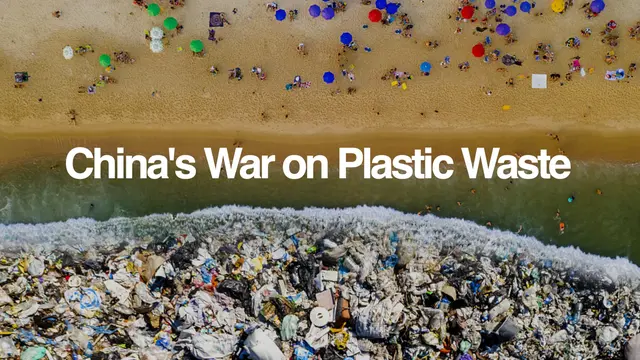03:26
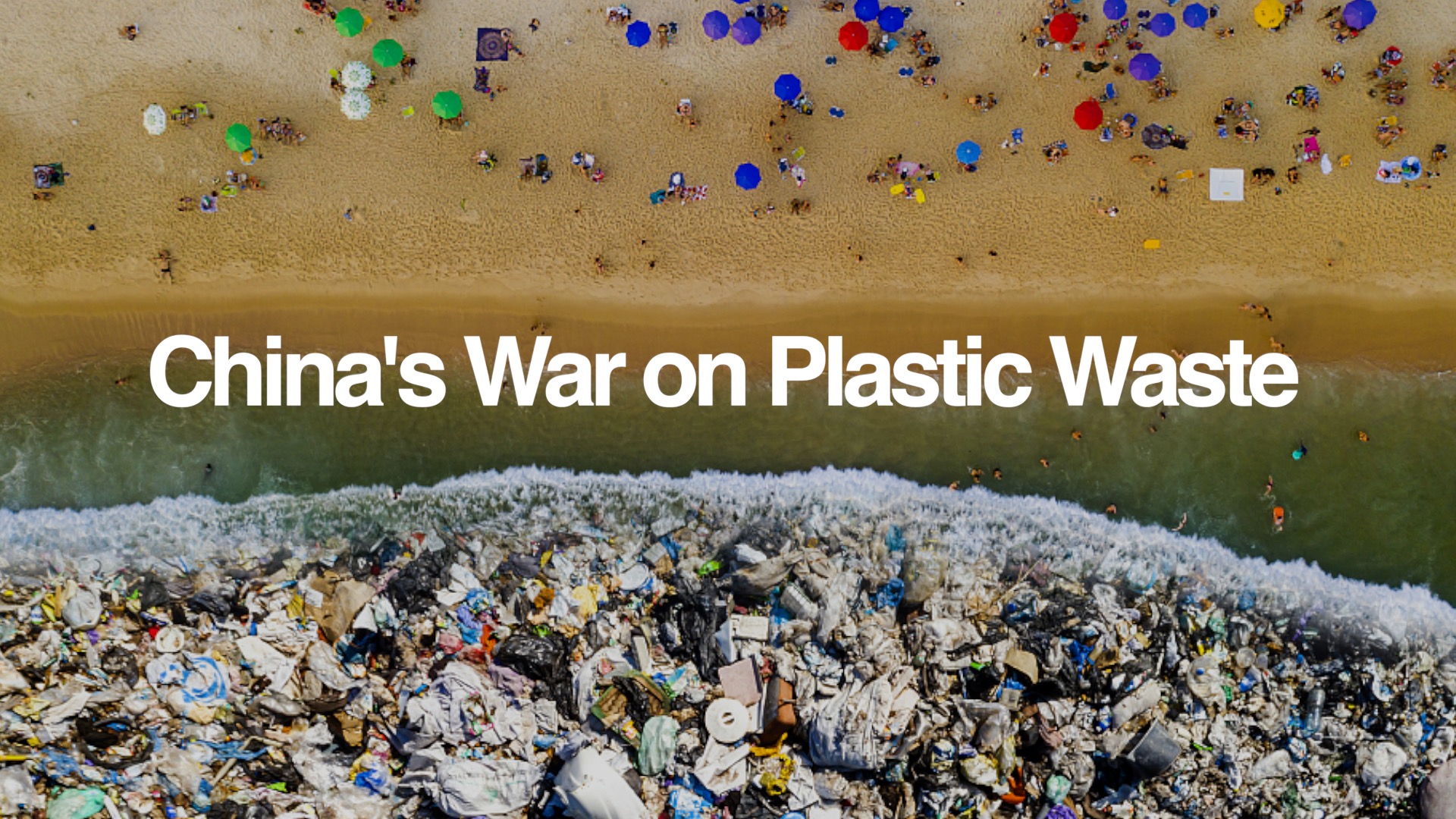
Single-use plastic straws are vanishing in China as the first phase of the country's most stringent plastic ban takes effect.
Durable, lightweight and versatile. Plastic products have been mass-produced for decades. But most are thrown away after just one use. And plastic pollution is now one of the world's most pressing environmental issues.
China is the world's biggest plastic producer and consumer.
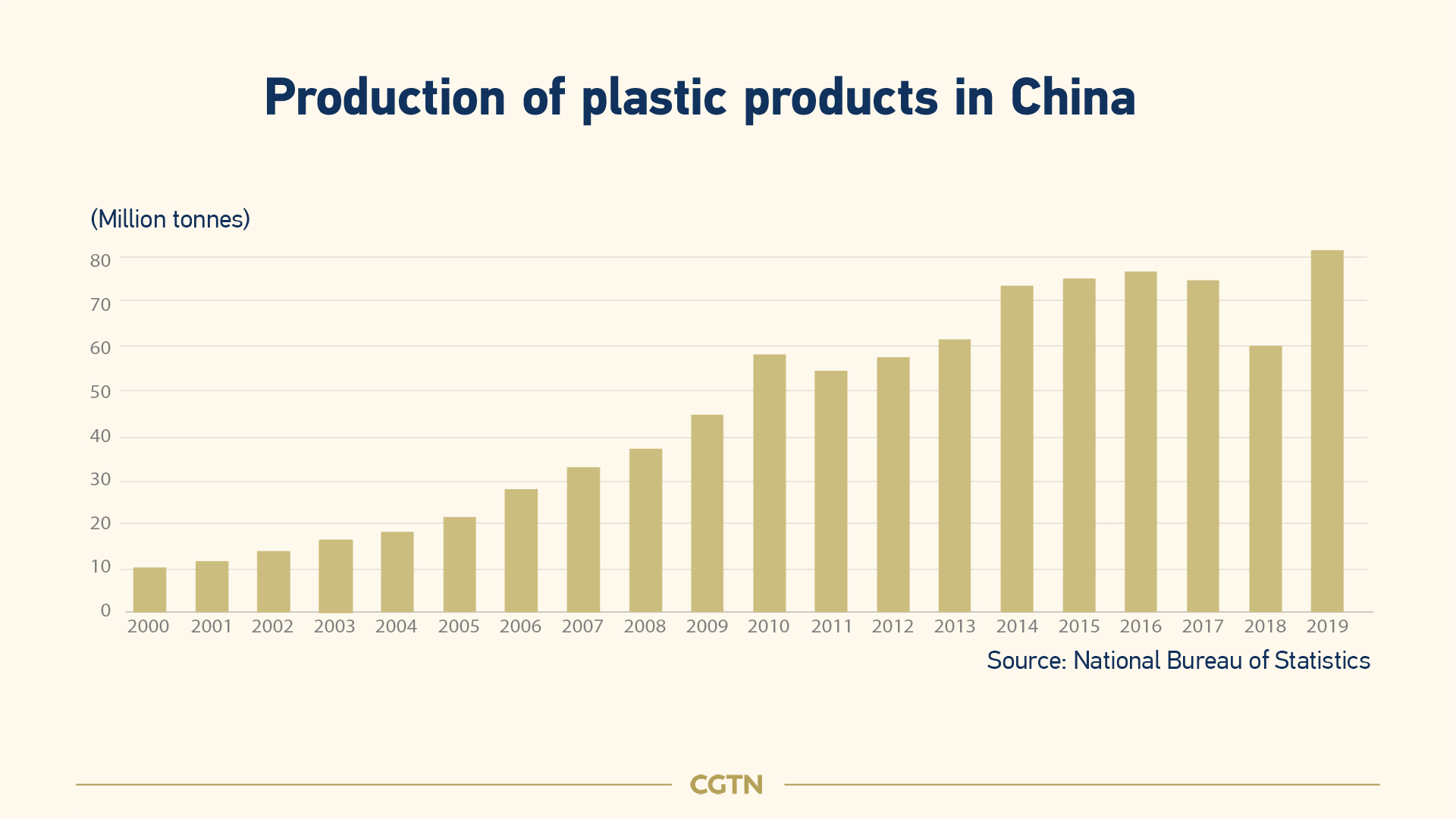
In 2019, China produced more than 80 million tonnes of plastic products. But a lack of recycling and reuse has been a persistent headache, both in China and the world at large.
Studies show that 8.3 billion tonnes of plastic was produced globally from 1950 to 2015, generating 6.3 billion tonnes of plastic waste. About 79 percent of that waste was discarded, 12 percent incinerated and merely 9 percent was recycled.
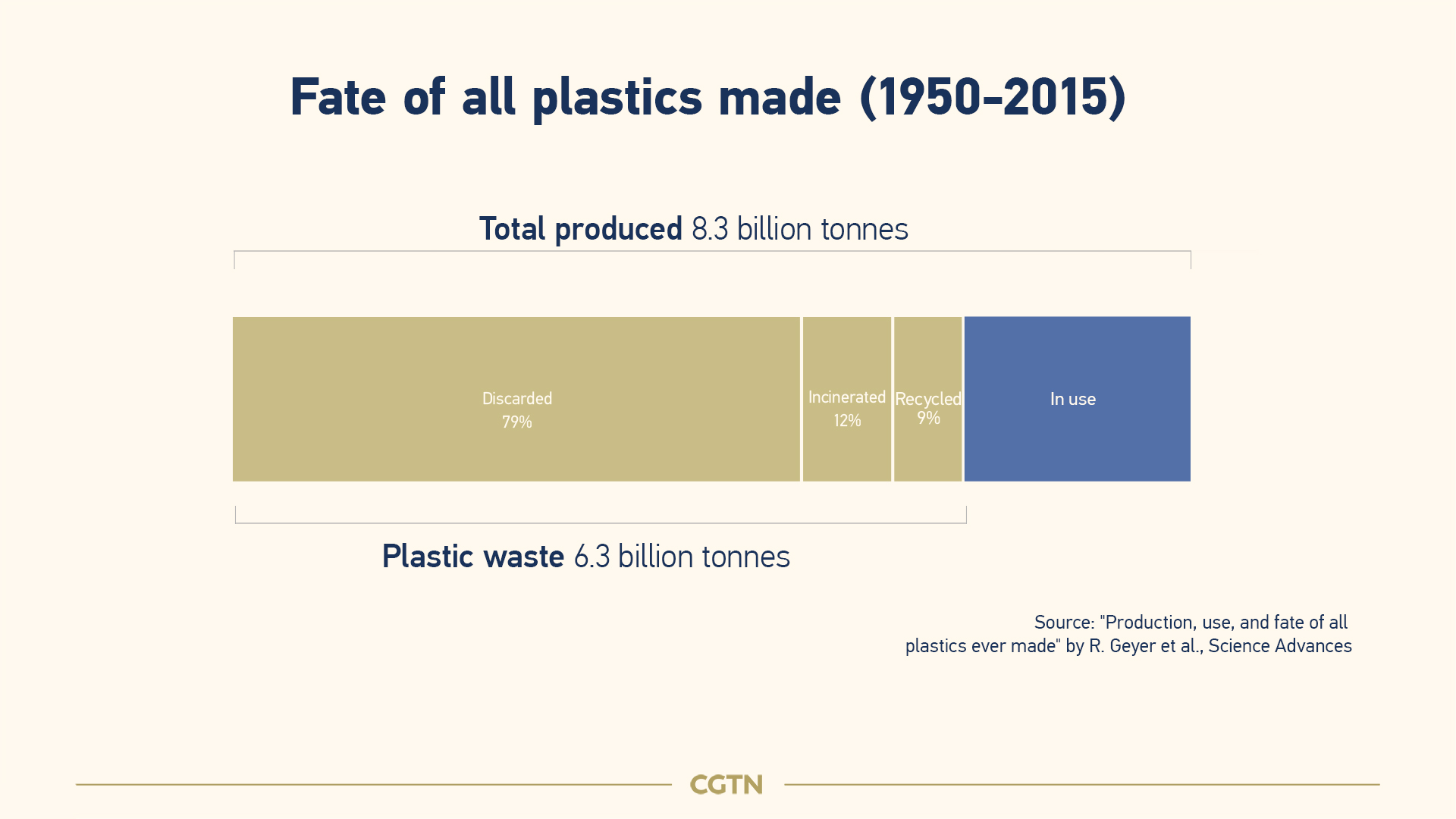
If the trend continues, there will be 12 billion tonnes of plastic waste in natural environment by 2050, which could linger un-degraded for hundreds of years.
It already makes up over 80 percent of all ocean waste in China's waters.
Plastic waste can easily enter ecosystems and food chains – including our own, in the form of microplastics. Studies say that humans on average ingest 5 grams of plastic every week, roughly the weight of a credit card.
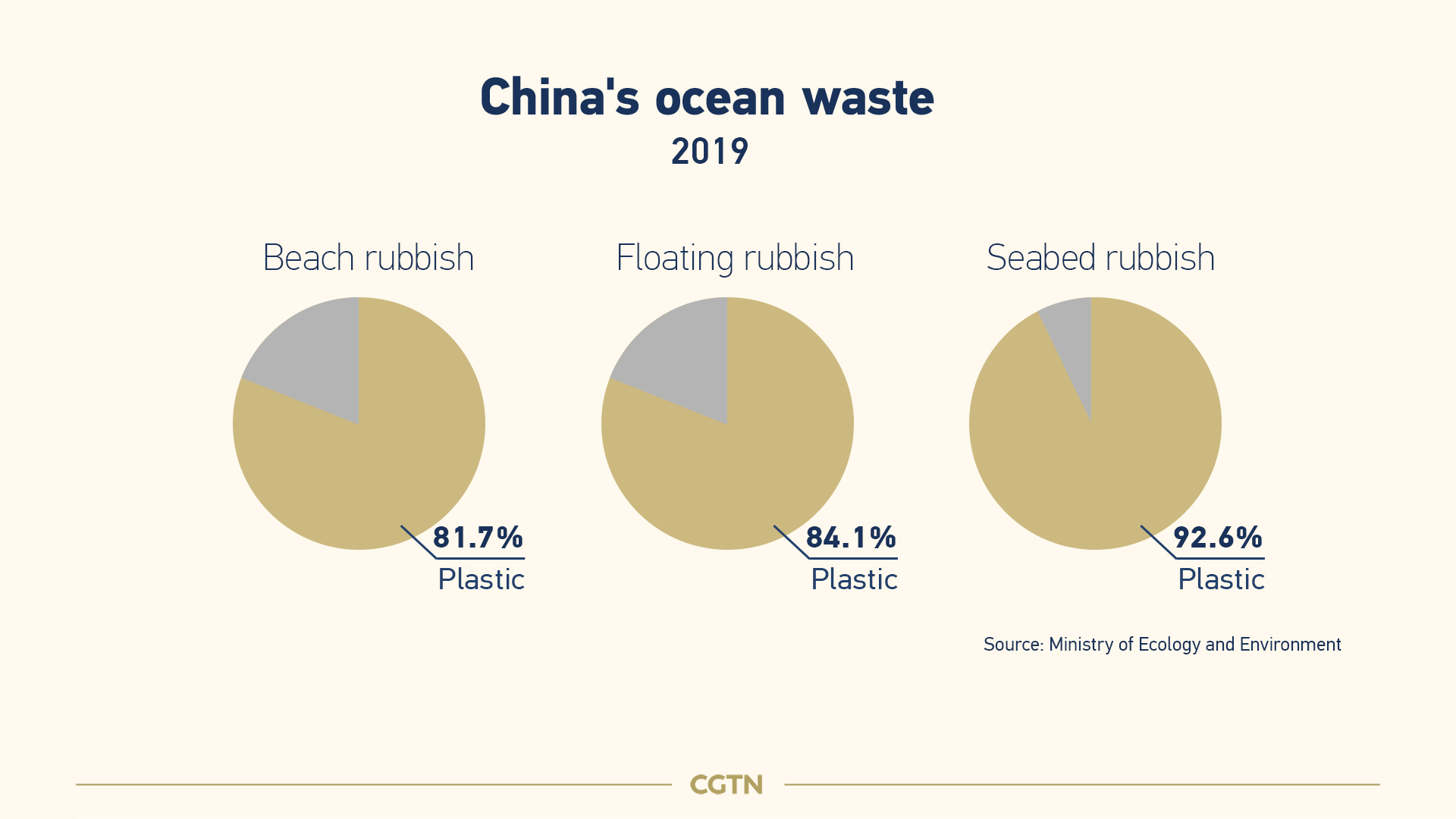
In 2008, China banned retailers from giving out free plastic bags, reducing their use in supermarkets and shopping malls by more than two thirds in the following years.
China's waste import ban, enacted in 2017, prevented the inflows of foreignwaste products including plastics. Before that, China imported over half of the world's plastic waste.
However, the fast expansion of express and food delivery industries has brought about new challenges.
In 2018, China's courier sector handled over 50 billion parcels. The total length of plastic tape used topped 39.8 billion meters – enough to circle the Earth nearly 1,000 times.
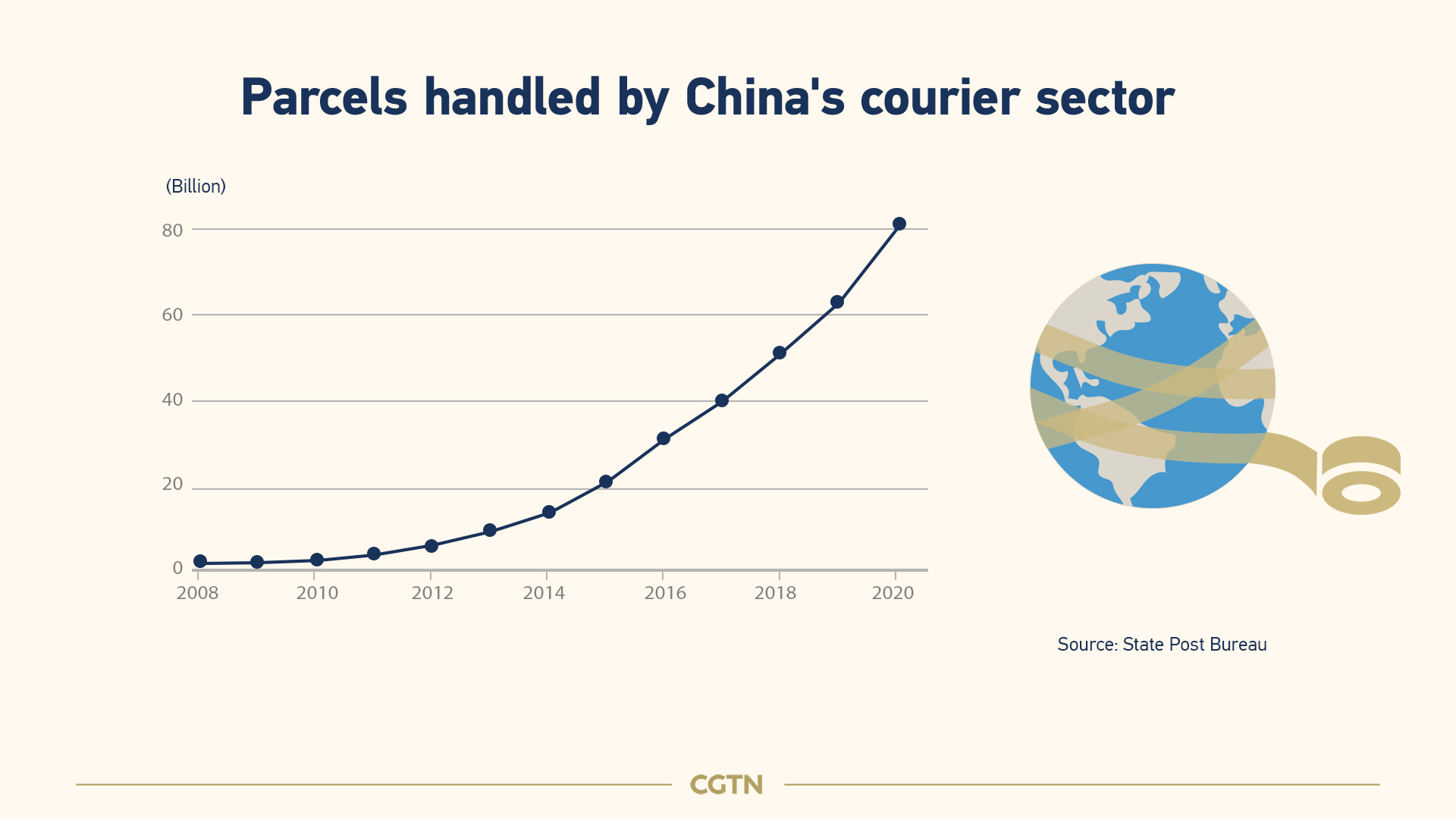
In 2020, due to COVID-19, the national takeaway industry is estimated to have received over 17 billion orders. And the take-out plastic bags used in a single day could cover at least 390 football fields.
In January 2020, China released an ambitious new plan with step-by-step timelines to ban or significantly cut plastic use in the next five years.
For example, by the end of 2022, key provinces and cities will be prohibited from using non-degradable plastic packaging and single-use plastic woven bags for postal and express services.
By the end of 2025, outlets nationwide will follow, with non-degradable plastic tape also banned.
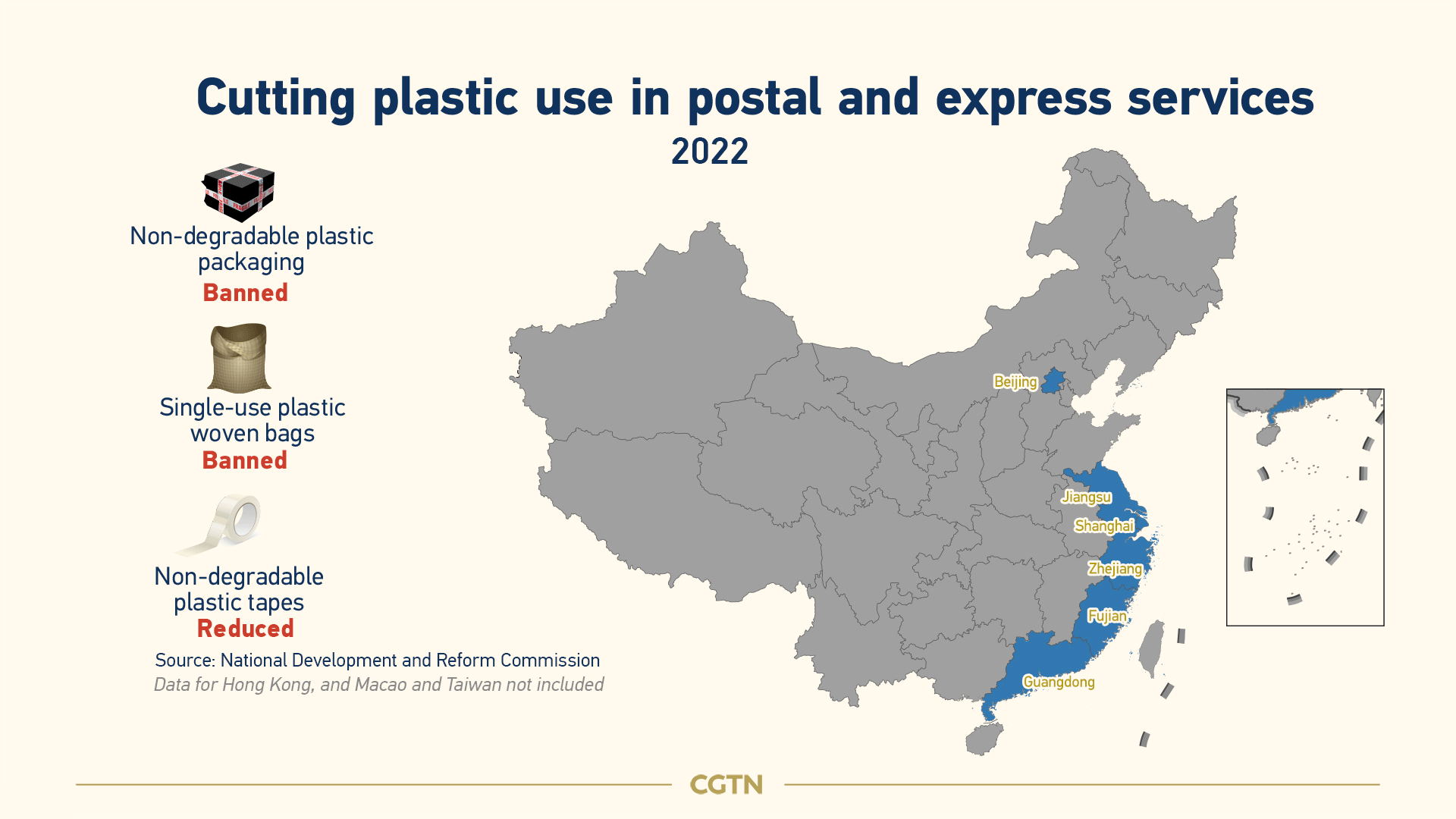
The new plan also imposes restrictions on other single-use, non-degradable plastic products, including disposable cutlery for take-outs.
By 2025, China expects to effectively control plastic pollution, substantially reduce the plastic waste in key cities' landfills, establish a complete plastics management system and make progress in the development of alternative products.
Script data editor: Hu Yiwei
Video editor: Li Ningning
Animation graphics: Pan Yufei, Li Yueyun
Voiceover: Vanessa Gu
 简体中文
简体中文

